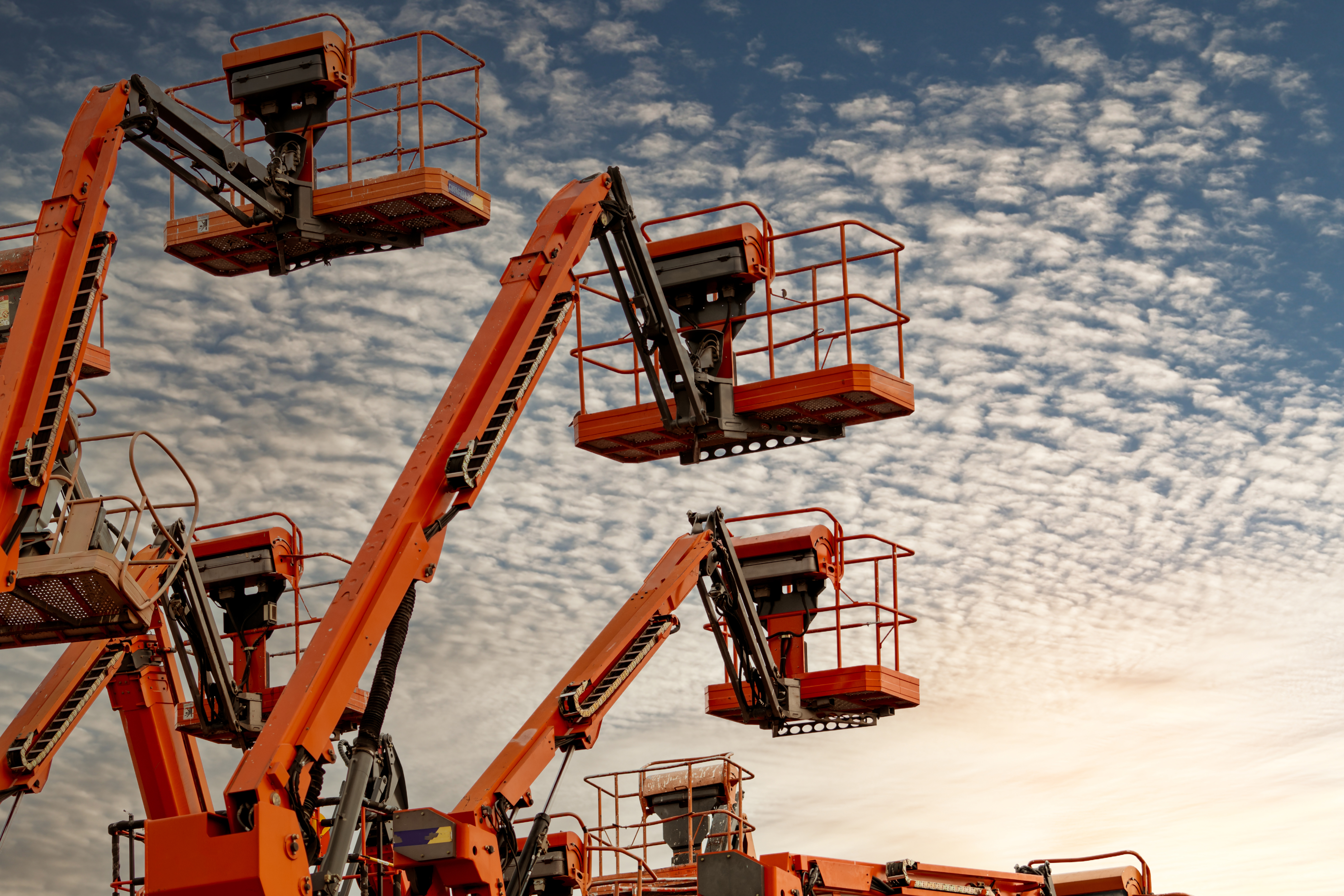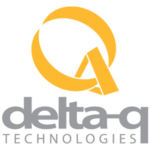The construction industry in the United States is on the cusp of a significant boom, driven by a combination of infrastructural demands and economic recovery efforts.
President Joe Biden’s $1.2 trillion infrastructure bill, approved in November 2021, is a major driving factor in this resurgence. This landmark legislation is expected to spearhead US construction output and substantially increase infrastructure spending, paving the way for expansive growth in the sector.
As construction projects across the country gain momentum, the need for Mobile Elevated Work Platforms (MEWPs) becomes ever more pronounced. Further pinching MEWP supplies is the need for hybrid and battery-powered machines to comply with noise and CO2 emission restrictions.
For OEMs and rental fleet managers, these multifaceted challenges create fertile ground for growth and advancement in the MEWP market. And as the data shows, these opportunities are not limited to US-based organizations alone.
The current state of MEWPs: A supply-demand gap
The demand for MEWPs has surged alongside the construction boom, as evidenced by the following 2021 statistics:
- Rental revenue for US-based MEWPs increased 15%, surpassing pre-pandemic levels.
- The total MEWP fleet size in the US grew by an impressive 10%.
This growth was fueled by a resumption of pre-pandemic investment strategies and pent-up demand from construction projects paused during the height of the COVID-19 pandemic.
While these numbers alone are noteworthy, additional research from the International Powered Access Federation (IPAF) provides key data that unlocks their true implications:
- Due to the rapid post-pandemic rebound, rental companies made concentrated efforts to prevent excessive utilization rates.
- Despite that, MEWP demand is clearly outstripping supply. Moving into 2023, utilization rates rose to an average of 73%—levels previously unseen in the US market.
- Even though lead times for new MEWPs improved, rental companies report backlogs through 2022 and 2023.
This supply-demand imbalance presents a unique challenge for the construction industry. It also opens the door to significant opportunities for OEMs and rental companies.
Global opportunities: How international OEMs can capitalize on MEWP demand
This growth in the MEWP rental demand is forecast to continue. Yet the same cannot be said for supply. Geopolitical trade issues are straining the supply chain even further, most notably a prohibitive tariff on Chinese MEWP imports announced in late 2021.
Given that China is a leading MEWP supplier, this development represents a major opportunity for OEMs from Europe, Canada, or Asia-Pacific (APAC) regions to enter (or expand) their presence in the US market.
For these potential new entrants, the timing couldn’t be better.
The US construction industry is poised for sustained growth, driven by the infrastructure bill and a backlog of projects delayed by the pandemic. OEMs that can help bridge the growing supply gap stand to capture a significant share of this promising market.
Electrification’s role in the MEWP Market
All-electric machinery emerges as the logical choice to meet this burgeoning demand, especially within the MEWP rental market. Simply put, this is because the inherent characteristics of electrified machinery align seamlessly with the needs and advantages of rental fleets.
Consider three benefits that demonstrate this synergy:
#1. Lower total cost of ownership (TCO)
Electric fleets offset their higher acquisition costs with reduced lifetime expenses. Maintenance needs are practically nonexistent—eliminating the need for:
- Oil changes, wear & tear servicing and replacement of more mechanical system components – along with the costs and downtime impacts.
- Expensive and price-volatile fossil fuels.
- Hydraulic systems, which are prone to leaks.
Advancements in electric MEWP technology, such as leveraging lithium-ion batteries, promise to lower TCO even further by 30-40%.
#2. Higher initial cost
A higher cost may not sound like a benefit—initially. However, this can actually be advantageous for forward-thinking fleet managers for a few reasons:
- Barrier to entry – The substantial upfront investment required for electrified machinery often acts as a deterrent for smaller operators and individual contractors. This creates a competitive advantage for larger rental companies that can afford the initial expenditure.
- Increased rental demand – Electric MEWPs are highly sought after due to their versatility and compliance with sustainability initiatives. But as mentioned, high initial costs often mean operators prefer renting over buying. This duality drives up demand for electrified rentals, enabling potentially higher utilization rates and quicker ROI.
- Future-proofing – As environmental regulations tighten, the industry will inevitably continue to shift towards greener technologies. By investing in electric MEWPs now, fleet managers can ensure compliance with future regulations—and avoid the financial and logistical challenges of transitioning an entire fleet on short notice.
#3. Telematics integrations
Modernized fleets equipped with telematics systems experience significant improvements in safety, operational visibility, and predictive maintenance capabilities.
Integrating telematics into electrified machinery provides real-time data and analytics, allowing fleet managers to:
- Monitor equipment usage.
- Track performance.
- Predict maintenance needs before issues arise.
This proactive approach works to minimize downtime, enhance efficiency, and keep equipment in optimal working condition.
Telematic integrations are already experiencing increased adoption. For example, it’s anticipated that Europe and North America will account for 3 million material handling equipment telematics systems by 2027. The active installed base of these systems in North America alone is forecasted to grow at a compound annual growth rate (CAGR) of 17.8%, reaching 1.2 million systems by 2027.
These combined benefits make electrified MEWPs, from scissor lifts to telescopic e-booms, an increasingly attractive option for construction projects of all sizes.
The path forward for MEWP market growth
As we move into late 2024 and 2025, the US construction industry is starting to feel the full impact of increased infrastructural spending and economic recovery efforts. This surge creates a ripple effect across the MEWP rental market, resulting in a supply shock compounded by geopolitical factors.
Electrified MEWP solutions emerge as the clear choice to meet this demand. The benefits of electrification—lower TCO, advanced telematics integrations, and emissions-free operations—provide unmatched versatility and ROI.
In this dynamic market landscape, solution providers like Delta-Q Technologies play a crucial role.
With decades of expertise and innovation in battery-charger development, Delta-Q’s goal is to help OEMs transition into electrified machine fleets.
Sources:
Statista. Construction industry in the U.S. – statistics & facts. https://www.statista.com/topics/974/construction/#topicOverview
Access Briefing. Report reveals growth for MEWP rental market. https://www.accessbriefing.com/news/report-reveals-growth-for-mewp-rental-market/8022054.article#
International Powered Access Federation (IPAF). MEWP Rental Markets Rocket, but Uncertainty Clouds Outlook. https://www.ipaf.org/en/news/mewp-rental-markets-rocket-uncertainty-clouds-outlook
JLG. 2022 MEWP Industry Trends. https://www.jlg.com/en/direct-access/2022/11/15/2022-mewp-industry-trends
Berg Insight. The Material Handling Equipment Telematics Market. https://media.berginsight.com/2023/07/04174958/bi-materialhandling1-ps.pdf





